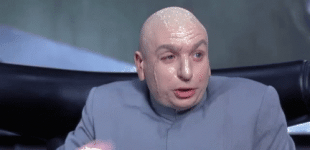daftandbarmy
Army.ca Dinosaur
- Reaction score
- 32,153
- Points
- 1,160
And, of course, some executives do better when they are not present at all... 
In her work as an executive coach, Brooke Vuckovic says there’s one topic that comes up with almost every single client: executive presence.
But, Vuckovic says, even though we so often talk about wanting to improve our executive presence, “we don’t quite know what it means when we’re pressed to define it.”
So Vuckovic, a clinical professor of leadership at Kellogg, created a rough formula for executive presence:

She stresses that while these underlying components are universal, a strong or effective executive presence might look different from one individual, situation, or culture to the next. So she encourages people to think of the pieces that make up these components as dials on an instrument panel. Depending on the circumstance, you can turn some dials up and others down.
“This is not a template, one-size-fits-all formula,” she says. “It is a flexible formula that you can tailor to your needs and the needs of your organization and your team at a particular time.”

 insight.kellogg.northwestern.edu
insight.kellogg.northwestern.edu
In her work as an executive coach, Brooke Vuckovic says there’s one topic that comes up with almost every single client: executive presence.
But, Vuckovic says, even though we so often talk about wanting to improve our executive presence, “we don’t quite know what it means when we’re pressed to define it.”
So Vuckovic, a clinical professor of leadership at Kellogg, created a rough formula for executive presence:

She stresses that while these underlying components are universal, a strong or effective executive presence might look different from one individual, situation, or culture to the next. So she encourages people to think of the pieces that make up these components as dials on an instrument panel. Depending on the circumstance, you can turn some dials up and others down.
“This is not a template, one-size-fits-all formula,” she says. “It is a flexible formula that you can tailor to your needs and the needs of your organization and your team at a particular time.”

Executive Presence Isn’t One-Size-Fits-All. Here’s How to Develop Yours.
A professor and executive coach unpacks this seemingly elusive trait.
 insight.kellogg.northwestern.edu
insight.kellogg.northwestern.edu




